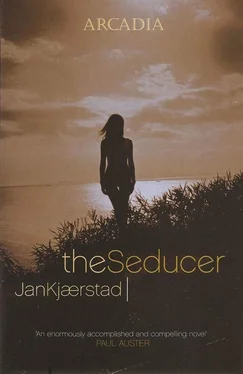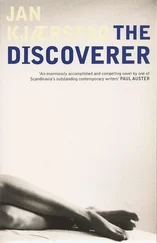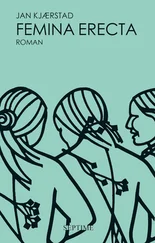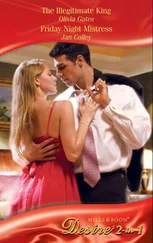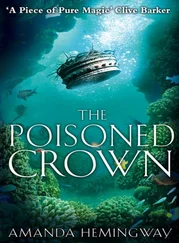Jonas managed to persuade Margrete to persevere, they even played over Christmas and on through the latter half of the winter, a couple of evenings a week at least, until Jonas had almost reached the level that most amateurs stick at for life, a slightly imprecise style, all home-made serves and countless technical errors, that nonetheless suffices to keep the ball in play so long as one’s opponent is no better a player. He had also been bitten, against all the prior warnings he had received, by the tennis bug, by the idea of batting a felt-covered rubber ball back and forth across a net. A court divided into six sections, yet an infinitude of possibilities. For one of his projects at the College of Architecture, Jonas had designed a house to a plan inspired by the divisions of a tennis court. But Margrete beat him every time, and she was growing more and more fed up with it.
Then, one particularly bad evening when Jonas had sent every ball he hit with his forehand slamming into the net, his eye was caught by two men in their forties, playing in the next court; real geniuses with a tennis ball, to Jonas’s mind at least, hitting the ball with such nonchalance, elegance and, above all, an ease unlike anything Jonas had ever seen; commenting all the while, wryly and with an astonishing breadth of vocabulary, on their own blunders. Even if Jonas was uncommonly ignorant as regards great Norwegian exploits in this particular sport, he ought at least to have recognized one of the players, or rather, his voice — because this was Finn Søhol, the man who had for decades been the top tennis player in Norway and was now a tennis commentator for NRK. For the benefit of those readers who are particularly interested, I can tell you that the other player was Gunnar Sjøwall, several times Norwegian champion and Søhol’s doubles partner of many years standing. As a pair, these two succeeded, among other things, in getting as far as the third round of the gentlemen’s doubles at Wimbledon in the mid-fifties — quite an impressive feat.
It may have been his very ignorance that gave Jonas the brass neck to approach Finn Søhol later, in the changing room, and ask him whether he would consider giving him some lessons, or at least see whether he could help him to improve his game.
‘Why?’ Søhol asked.
‘My girlfriend’s dad’s a fiend from hell,’ Jonas said. ‘I’ve just got to beat him. It’s a matter of life or death.’
Søhol laughed but accepted this as a valid reason. He could tell at a glance, possibly thanks to the intuition developed through all his years of playing tennis, that there was something special about the young architecture student standing before him, sweating and vehement, a Donnay ‘Borg pro’ racket resting on his shoulder like a rifle. Which is how Jonas came to find himself, one week later, on the island of Bygdøy, inside the whitewashed, green-roofed building that was home to the Bygdøy Tennis Club.
Finn Søhol, Jonas’s voluntary unpaid trainer, had already worked out a strategy; he had given the matter some thought, had even become quite intrigued by the problem. ‘The only way you can beat a more experienced player is by learning to serve,’ he said. ‘Serve well, I mean.’ Søhol demonstrated what he meant by a good serve. Jonas did not even have the chance to lift his racket, just heard the whoosh of the ball. His first thought was to walk out right there and then; the whole situation was too ridiculous, too extreme. But once he had had time to think about it he found that he liked the idea, and the more he thought about it the more he liked it. That everything could hang on such a detail. That you could win a match even if you had not mastered the whole gamut of strokes, even if neither your footwork or physical form were up to scratch. It reminded him a little of his own attempt to gain some understanding of the entire universe solely by studying the planet Pluto.
Søhol devoted the rest of the evening at Bygdøy Tennis Club to the art of tossing the ball into the air correctly. Jonas threw the ball in to the air again and again, without hitting it once; just stood there, throwing the ball up, pretty high, with a straight left arm, in such a way that, if he threw it correctly, it would land on a handkerchief that Søhol had spread on the court a little way in front of his body and a shade to the right of his left foot. Having done this repeatedly for what felt like an eternity to Jonas, he was allowed, for another eternity, to swing his racket back and up at the same time as he threw the ball — a vital action, almost like something out of a ballet, in which the arms fly apart, and rhythm and timing are all — but still without hitting the ball, without serving.
Jonas Wergeland left Bygdøy Tennis Club feeling convinced that he had just learned his most important lesson in tennis, without having played a single stroke. He liked it, inside he was jumping for joy, he realized that he had found his angle, for the first time he realized that he had a microscopic chance of actually beating such a superior opponent as Gjermund Boeck, an out-and-out fiend as well as being an ambassador and his future father-in-law.
Jonas took up the challenge with renewed energy. At the flat in Ullevål Garden City he practised the moves that Søhol had taught him, drawn from the javelin throwers’ training programme, exercises to build up the muscles that would give him a better throwing action. Jonas threw himself into this with an enthusiasm that almost surprised himself and left Margrete shaking her head; lay on the living-room floor, surrounded by his future in-laws’ bronze gods and earthenware vases from the Far East, doing a variety of sit-ups to strengthen both the vertical and diagonal abdominal muscles, working slowly but steadily to begin with; lay on his back with his arms stretched out behind his head and lifted weights; did what were known as pullovers, an exercise perfected by Terje Pedersen, a Norwegian who had for some time held the world record in the javelin and whom Jonas Wergeland was now imitating in order to build up that part of the chest muscle which pulled the arm forward — one muscle he had real need of when serving — and in the midst of all these monomaniacal exertions, his eye kept going to the polar-bear skin on the floor, as if it were some huge, enticing diploma. Once the snow had melted, Jonas Wergeland could be found in the garden, standing lost in concentration among the apple trees, throwing a ball into the air and getting it to land on a handkerchief spread on the ground. To a chance observer, it must have looked as if he were performing some arcane ritual, some sort of religious observance, possibly of Far Eastern origin.
He made five more visits to Bygdøy Tennis Club and Finn Søhol. Serving and serving, again and again, the art of repetition. Again Søhol spread the handkerchief on the floor, in the service court this time, like a bull’s-eye at which Jonas was to aim, one which was gradually moved. ‘If you’re to force his backhand, you’ll have to serve first towards the centre and then out to the line!’ Søhol was far from satisfied but thought Jonas was improving. ‘To hell with the second serve, hit it as hard as you can every time, either you’ll win the point or it’ll be a double fault, all or nothing.’ During the last two sessions they also practised forehand returns so that Jonas, if he were lucky, would be able to return some of the ambassador’s serves. ‘You might be able to break his rhythm and win a few points on his serve, too,’ said Søhol.
Finally, Søhol set up a tennis machine on the opposing baseline to give Jonas the chance to really try out his forehand. It was a momentous experience: being bombarded by an incessant stream of yellow balls as in some ancient myth in which warriors sprang up from the ground as fast as the hero could hack them down. ‘Swing your racket well back,’ yelled Søhol, ‘now follow through. That’s the way. Well done.’
Читать дальше
